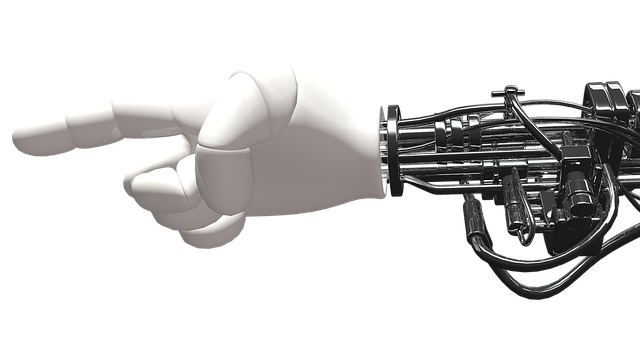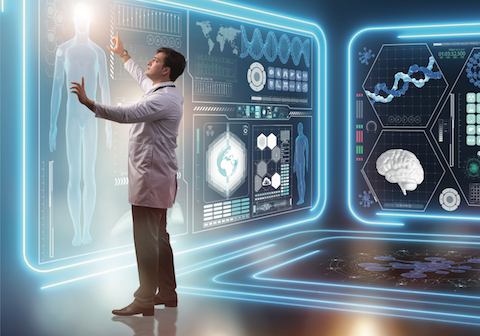
To help us understand the world better, there are many kinds of AI. There are two types of AI: brain-inspired and inference based. Both use a combination neural networks and machine-learning. Multiple methods can be used to aid the system in performing tasks more efficiently and accurately. These methods are known as the pillars in AI computing. This technology will enable us to understand the world better and make life easier for everyone.
In-memory computing
AI technology is constantly evolving, so the von Neumann Architecture will need to evolve. The current implementation is dependent on increasing storage capacity and CPU capacity. These are not compatible with AI. In-memory computation will decrease both the size and costs of data storage and access. It will also make access to data easier, as computations are done directly in memory. Here are the benefits of in-memory computing for AI:

Complex tasks can be run on small computers by using in-memory computing. In-memory computing can lead to significant bottlenecks if the activation coefficient is large. Control engineers realize that efficient design includes avoiding costly functions. In-memory compute architectures should have enough memory to handle the largest activation coefficients. This is vital for embedded AI. This means that CPUs can only perform a fraction the work that is stored in memory.
Inference-based computation
AI inference deployments can be successful only if the appropriate architecture is chosen. Inference-based computing may be faster than traditional computation, but it comes with its challenges. Performance of AI inference workloads is dependent on the balance between efficiency and power use. In-memory computing is a natural choice from a technological perspective, but at-memory compute addresses specific AI inference challenges. Below are key features of inferencebased computing.
Inference-based computing uses a backward chainsing process. This means that the inference engine cycles through three stages: match, select, then execute. Matching rules adds new facts to the knowledge base. Selecting rules involves searching through antecedents that satisfy the goals. Back chaining searches to find antecedents which satisfy the goals. Here is an example of the steps an inference engine takes to cycle through these steps.
Brain-inspired computation
Brain-inspired computational is based upon the principles of natural selection and aims for systems that can be compared to the functioning of the human mind. Brain-inspired computation seeks to mimic the brain's cognitive abilities and coordination mechanisms as well as overall intelligence. These systems can be implantable, wearable, and could have a significant impact on the environment. But first, what is brain-inspired computation? How can it improve computer science research?

The Semiconductor Research Corporation is funding a five year project called the Center for Brain inspired computation at Stanford University. The company supports research programs in universities, which link industry and academia to develop innovative and early results to advance technology. It also trains highly skilled workers who will be used in the semiconductor manufacturing industry. The CBIC researchers are optimistic that this ambitious goal will bring about significant advancements in computer sciences. The Center's work is still in its infancy, but brain-inspired computing chips could lead to new generations of autonomous and intelligent systems.
FAQ
Is AI good or bad?
AI can be viewed both positively and negatively. Positively, AI makes things easier than ever. No longer do we need to spend hours programming programs to perform tasks such word processing and spreadsheets. Instead, our computers can do these tasks for us.
The negative aspect of AI is that it could replace human beings. Many believe that robots may eventually surpass their creators' intelligence. This could lead to robots taking over jobs.
What are some examples AI-related applications?
AI is used in many areas, including finance, healthcare, manufacturing, transportation, energy, education, government, law enforcement, and defense. These are just a handful of examples.
-
Finance - AI has already helped banks detect fraud. AI can scan millions of transactions every day and flag suspicious activity.
-
Healthcare - AI can be used to spot cancerous cells and diagnose diseases.
-
Manufacturing - AI is used to increase efficiency in factories and reduce costs.
-
Transportation - Self driving cars have been successfully tested in California. They are currently being tested all over the world.
-
Utilities use AI to monitor patterns of power consumption.
-
Education - AI is being used in education. Students can, for example, interact with robots using their smartphones.
-
Government - Artificial Intelligence is used by governments to track criminals and terrorists as well as missing persons.
-
Law Enforcement - AI is being used as part of police investigations. The databases can contain thousands of hours' worth of CCTV footage that detectives can search.
-
Defense - AI can both be used offensively and defensively. It is possible to hack into enemy computers using AI systems. Protect military bases from cyber attacks with AI.
What are the benefits of AI?
Artificial Intelligence is a revolutionary technology that could forever change the way we live. It is revolutionizing healthcare, finance, and other industries. It's also predicted to have profound impact on education and government services by 2020.
AI is being used already to solve problems in the areas of medicine, transportation, energy security, manufacturing, and transport. The possibilities for AI applications will only increase as there are more of them.
What is it that makes it so unique? It learns. Computers learn independently of humans. Computers don't need to be taught, but they can simply observe patterns and then apply the learned skills when necessary.
AI is distinguished from other types of software by its ability to quickly learn. Computers are capable of reading millions upon millions of pages every second. They can recognize faces and translate languages quickly.
It can also complete tasks faster than humans because it doesn't require human intervention. In fact, it can even outperform us in certain situations.
A chatbot named Eugene Goostman was created by researchers in 2017. This bot tricked numerous people into thinking that it was Vladimir Putin.
This is proof that AI can be very persuasive. Another benefit of AI is its ability to adapt. It can be trained to perform different tasks quickly and efficiently.
Businesses don't need to spend large amounts on expensive IT infrastructure, or hire large numbers employees.
Statistics
- In 2019, AI adoption among large companies increased by 47% compared to 2018, according to the latest Artificial IntelligenceIndex report. (marsner.com)
- According to the company's website, more than 800 financial firms use AlphaSense, including some Fortune 500 corporations. (builtin.com)
- In the first half of 2017, the company discovered and banned 300,000 terrorist-linked accounts, 95 percent of which were found by non-human, artificially intelligent machines. (builtin.com)
- A 2021 Pew Research survey revealed that 37 percent of respondents who are more concerned than excited about AI had concerns including job loss, privacy, and AI's potential to “surpass human skills.” (builtin.com)
- More than 70 percent of users claim they book trips on their phones, review travel tips, and research local landmarks and restaurants. (builtin.com)
External Links
How To
How to set up Cortana daily briefing
Cortana in Windows 10 is a digital assistant. It helps users quickly find answers, keep them updated, and help them get the most out of their devices.
To make your daily life easier, you can set up a daily summary to provide you with relevant information at any moment. The information should include news, weather forecasts, sports scores, stock prices, traffic reports, reminders, etc. You can choose the information you wish and how often.
Win + I is the key to Cortana. Select "Cortana" and press Win + I. Click on "Settings" and select "Daily Briefings". Scroll down until you can see the option of enabling or disabling the daily briefing feature.
If you have the daily briefing feature enabled, here's how it can be customized:
1. Open Cortana.
2. Scroll down to the "My Day" section.
3. Click the arrow beside "Customize My Day".
4. Choose which type of information you want to receive each day.
5. You can adjust the frequency of the updates.
6. Add or remove items to your list.
7. Save the changes.
8. Close the app.